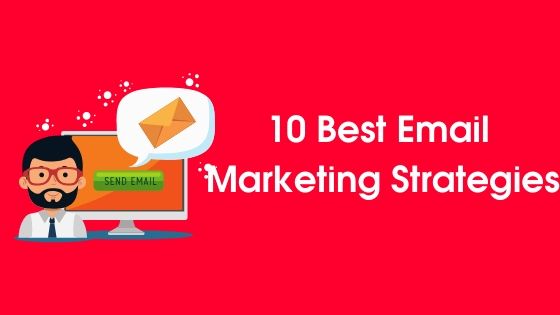Email marketing can generate better returns on investment (ROIs) than any other method of digital marketing. In fact, even just an average email marketing campaign can return $43 dollars for every single dollar spent.
Backed by the right strategies, however, email marketing can be much more lucrative for businesses. Its yielding higher ROIs and other benefits (like greater brand recognition and authority).
Table of Contents
Email Marketing Strategies for 2020

Whether you’re just diving into email marketing or you’re ready to refine your business’ current email campaigns, below are 10 actionable strategies you can use to maximize the success of your email marketing. These strategies can be integral to creating engaging email campaigns and perfecting them for your target audience and ideal customers.
How to Put Together an Effective Email Campaign
- Take the Time to Craft a Great Subject Line– This can be your only chance to convince your audience to open your email. So, be thoughtful and choose your words wisely.
- Know Your Audience & Keep It Personal– Use the words, tone and images that will catch your audience’s attention. In other words, speak their language in both written and visual content. Also, consider using personalization tools (if your email marketing service offers them). Content that’s tailored your audience, along with personalization, can be highly effective at drawing your audience in and keeping them engaged.
- Try New Things– While templates can be incredibly helpful for quickly generating new emails, try to avoid sending out cookie-cutter emails. These can quickly become stale to an audience, and they may even make a brand come across as out of touch. Instead, keep it fresh by trying new things, both in terms of format and content. For example, if you have been sending out tips or recipes, switching to videos, user-generated content, coupons or interactive content (like surveys) is a great way to keep your audience interested and on their toes.
- Deliver Value Every Time– Give your audience a reason to want your emails to arrive in their inbox and, when they do, to want to open them. “Value” in emails can be anything from special offers, deals and discounts to insider tips, free items (like a free eBook) and exclusive content.
- Automate– Take advantage of email automation tools, and set up a series of emails to be automatically sent to your audience. Depending on the platform you use (and the plan you have), you may be able to automate emails to go out to certain segments of your audience when they take specific actions (like clicking through to your website). These types of automated drip campaigns have been found to have as much as a 98 percent conversion rate for quality leads.
How to Send Out Emails & What to Do After
- Schedule Your Emails at the Right Time– Poorly timed email campaigns can get buried in inboxes. So, do some research to find out the ideal times to send emails to your target customer. While the best time for your emails will depend on who you are trying to reach, industry-leading researchers have found that, in general, the best day of the week and time to send out email campaigns is on Tuesdays at 11 a.m.
- Promote Your Emails Across Social Media– Many email marketing platforms can be integrated with social media, allowing you to automatically coordinate social media posts with the transmission of your emails. This effectively gives you two ways to reach your audience when conducting email campaigns – through their inboxes and through social media.
- Send Your Audience to the Right Place– In other words, think about the best place for your audience to go when they click on a link in your email. Don’t send them to a generic page (like your website’s homepage). Make sure they land on a page that’s specific to the information they have just read, that delivers what your audience would expect and be looking for and that has an effective call-to-action.
- Look at the Metrics– After each email campaign, carefully analyze metrics like open rates and click-through rates. Many email marketing platforms come with sophisticated analytics tools that let you take a deep dive into the data. And that can be important in evaluating how different campaigns perform with different segments of your audience, at different times (of the day, week or year) and much more.
- Do A/B Testing– Once the data gives you a clearer picture of how your audience is responding to different campaigns. Start making changes, and keep analyzing performance and metrics. This is the best way to improve each campaign while getting the most out of your email marketing investment and efforts.
Setting Your Email Marketing Up for Success: The Bottom Line
As you launch and refine email campaigns for your business, the bottom line is that the right strategies and data can be leveraged to maximize your email marketing ROI.

